Indexed In
- Genamics JournalSeek
- Academic Keys
- JournalTOCs
- China National Knowledge Infrastructure (CNKI)
- Access to Global Online Research in Agriculture (AGORA)
- Centre for Agriculture and Biosciences International (CABI)
- RefSeek
- Directory of Research Journal Indexing (DRJI)
- Hamdard University
- EBSCO A-Z
- OCLC- WorldCat
- Scholarsteer
- SWB online catalog
- Publons
- Euro Pub
- Google Scholar
Useful Links
Share This Page
Journal Flyer

Open Access Journals
- Agri and Aquaculture
- Biochemistry
- Bioinformatics & Systems Biology
- Business & Management
- Chemistry
- Clinical Sciences
- Engineering
- Food & Nutrition
- General Science
- Genetics & Molecular Biology
- Immunology & Microbiology
- Medical Sciences
- Neuroscience & Psychology
- Nursing & Health Care
- Pharmaceutical Sciences
Review Article - (2021) Volume 12, Issue 7
Recent Developments in Intelligent Packaging Systems for Food Processing Industry: A Review
Jitendra Kumar, Konala Akhila and Kirtiraj K. Gaikwad*Received: 17-Jun-2021 Published: 15-Jul-2021, DOI: 10.35248/2157-7110.21.12.895
Abstract
The development of several novel food packaging techniques is seen in the market that help the consumer monitor their quality, safety, integrity, cleanliness, freshness, and purity until they are being consumed. In addition to this, there is a need to minimize food corruption, counter-theft, spoilage, contamination, and efficient food safety communication. Several current technologies for packaging, such as intelligent packaging and active packaging, have been established to meet this requirement. In this review paper, we discussed various types of intelligent packaging systems like indicators, sensors and data carriers. Indicators indicate the current status of food products from the inside by giving visual signals like colour change. Sensors, which are digital in nature, detect the changes that occur in the product with the help of transducers and signal processors. Finally, a brief discussion about data carriers and their classification, such as Bar codes, QR codes, Radio Frequency Identification Devices, and Near Field Communication Systems, is given. These systems help to track the product in supply chain and inventory management.
Keywords
Food packaging; Intelligent packaging; Indicators; Sensors; Radio frequency identification; Food quality; Smart packaging
Introduction
Intelligent packaging is all about the use of modern technology in conventional packaging and thus modifying the conventional form of packaging according to the end-user. The use of equipment in packaging like sensors, temperature indicators, time-temperature indicators that detect the changes that take place inside the food or any other package as the time passes due to respiration activity and desiccative activity and infection by insects, by microbial growth (e.g. spoilage bacteria), and by chemical changes (oxidation, change in pH value due to acidification). Intelligent packaging systems communicate the current status (condition of the food product or any other product inside the package) of the food product inside the package [1-17]. Intelligent packaging systems communicate and provide convenience to the end consumer because of the hectic lifestyle of the consumers to explore more on these products. People nowadays make their purchasing decision on the basis of reviews or ratings, feedback given by the customer who purchased the same product before. Intelligent packaging systems help in continuous monitoring by communicating the exact extent of spoilage due to oxidation or deoxidation of the food product and help to prevent people from eating harmful food. The change in lifestyle and urbanization has increased the demand for longer shelf life, clean, quality and nutritional food in a safe condition. In order to fulfil this, researchers and manufacturers have to focus on the development of active and intelligent packaging systems. Due to busy lifestyle, people demands minimally processed, ready to eat food product which generate the need of modernized packaging technology. Apart from intelligent packaging systems, active packaging and MAP are also under consideration and research work to increase the shelf life of food [18-20].
Smart packaging technologies are used to improve better communication of changes in food inside the package and to display various alerts of potential problems in the environment of the package has discussed food quality relates to time, temperature, sensors, signs of freshness, time, integrity, etc. pH, or volatile substances related to food deterioration or microorganism growth are quickly recognizing the quality of food [2,21-23]. Smart packaging is utilized to diminish food loss and to communicate food quality and food safety information, including distribution control support like tracking and tracing of the package in supply chain management and stock rotation and supply chain management for inventory handling [24,25]. The current active and understanding patterns are discussed in this chapter [1]. explained about the advances on the development advances on the development, easily applicable for food packaging applications, of the many types of CO2 sensors, e.g., optical sensors, opal polymer film, hydrogels of polymer, etc. High CO2 gas levels are the key indicators of food decomposition in packaged food, and maintaining them at ideal standards is vital for avoiding spoilage in food packaged under Modified Atmosphere (MAP) conditions. A CO2 sensor integrated into the food package can therefore monitor product quality efficiently till it reaches the consumer explains the areas of usage and enhancements to time, leakage and freshness indicators in smart packaging. In intelligent packaging system indications, information on product quality may also be added to the packaging surface or be integrated into packages that are enhanced to determine metabolite residue created in stock by the surrounding conditions and headspace natural gases of packaging [3]. The temperature of the product, its microbiological ruin, its integrity and its physical shock, and its freshness can be monitored [4] has discussed the technical aspects and commercial use of intelligent packaging techniques to evaluate the vegetable freshness of the packaged product. It summarizes characteristics that influence the vegetable quality and spoilage of fruits and vegetables. In intelligent packaging systems such as sensors, indicators and data carriers combined with the sensors, some of the technology applied to track and deliver the altering quality and safety performance of packed goods reviews current developments in the fields of intelligent packaging devices, including labeling of barcodes, identification of radio frequencies, time indicators, gas indicators and biosensors [5]. The application of the design framework for critical control points for hazard analysis and microwave ovens is illustrated. Also mentioned is a research roadmap for smart packaging this review discusses the status of chemical and biological food tracking and intelligent packaging sensors. Application examples include sensing designs and their analytical characteristics for the measurement of freshness markers, allergies, pathogens, adulterants and toxicants [6]. Their possible use in smart packaging could simplify monitoring of food status, ultimately reduce waste and improve the nutritional value in general presents a silver enhancement methodology in this work for identity antennas for radiofrequency and shows his applicability to remote biomonitoring [7]. If a sample is present in the silver enhancement process, target analyses or pathogens automatically assemble a chain of microwaves [8].
Intelligent packaging systems for food
The intelligent packaging system is a developing technology in the food packaging sector. Intelligent packaging system senses and communicates information related to internal or external conditions change of package. It has a great potential to improve the traceability, safety and talks about the real-time quality condition of the package [26, 27]. IP also help to communicate the present status of the package to the stockholder of supply chains among manufacturer, supplier and retailers and the end consumer. Data carriers provide helps to sustain the authenticity, can hint consumers about the tampering by storing some confidential information in the form of bar codes, QR codes in some coding language (figure 1). It may also show seal credibility and serve as a deterrent to counterfeiting. Intelligent packaging systems are classified mainly into three groups such as indicators, sensors and data carriers [9].
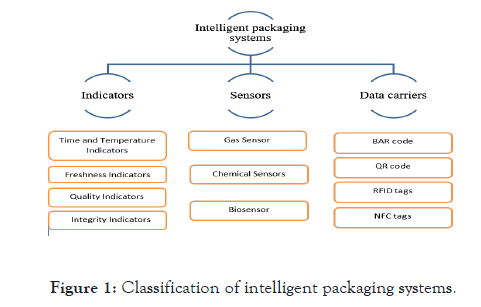
Figure 1: Classification of intelligent packaging systems.
Indicators
As the name suggests, these systems indicate or communicate information like colour change, temperature, moisture present inside the package and microbial growth, which takes place inside the package or in the headspace of the package. Indicators for evaluating metabolite residue produced during storage may be added to the package surface or integrated into packages that are enhanced [28-30]. Type of indicators used in intelligent packaging systems, microbial growth and freshness indicators, gas leakage or concentration indicators, time-temperature indicators, temperature indicators.
Time temperature indicators
Time-Temperature-Indicators (TTIs) indicate the change in temperature and the pH value which takes place inside the package by sensing the surrounding atmosphere. Food manufacturers are also used to monitor the temperature of products at any stage of the supply chain, from harvesting or cutting to consumption or end-use for ensuring food quality. The intelligent application of tools like sensors and indicators for inspection of the time and temperature history of the products are known as time-temperature assessment [3]. The identification of time and temperaturedependent enzymatic and microbiological alteration in a food product is the practical idea of time-temperature indicators [31]. Chemical and physical responses are dependent on acidic and basic chemical reactions, sometimes polymerization chemical reactions in relation to time and temperature. Biological activity is dependent on biological changes that take place in time due to temperature, such as micro-organisms, viruses and enzymes [9]. The calculated values are generally presented as a visible answer, like colour changes and physical structural changes. TTIs are known as user-friendly and easily accessible devices due to thein indicator suchr basic features (figure 2). A as Fresh-Check manufactured by Lifeline technologies is an example of time-temperature indicators. It works by causing a colour shift in the indication range as a result of a polymerization reaction.
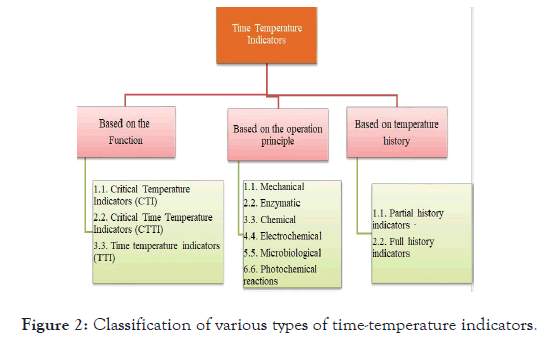
Figure 2: Classification of various types of time-temperature indicators.
Diffusion based time-temperature indicators mechanisms
The operating principle of indicators is based on various chemical reactions among two or more materials such as enzymatic reactions, mechanical phenomenon, chemical reactions etc. Due to this, the indicator changes colour irreversibly as a clear reply. In food packaging applications, mainly diffusion-based time temperature and microbial-based time temperature are common in use. Diffusion based time-temperature indicators give indications due to intermixing of food materials and metabolites produced by microbial growth. This indicator is made by a sheet-like thin film of paper, glue, and other materials on the inner side. The appearance of the indicator changes when the food’s storage conditions (i.e., temperature, humidity, chemical reactions) exceed unfavourable levels, warning the consumer that the product is spoiled. This indicator is made by a porous wick with dyed acid (fatty) ester (figure 3). As the temperature of the food product reaches beyond the desired limit, the ink present in indicators moves to different levels in increasing order. Different food materials give indication along with the different colours of the dye and should be remembered at the time of designing of time-temperature indicators [10].
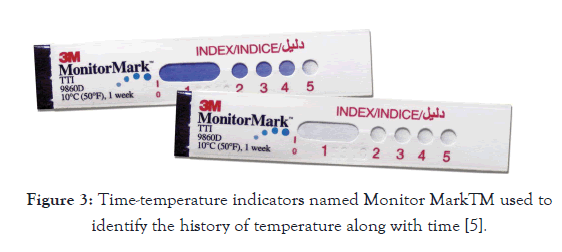
Figure 3: Time-temperature indicators named Monitor MarkTM used to identify the history of temperature along with time [5].
Freshness indicators
Freshness indicators indicates the freshness of food products by monitoring the spoilage rate, presence of a contaminant. Different markers that signal the start of spoilage are used to assess in-package freshness prior to opening. Pathogens, amines, degradation byproducts, ethylene gas, carbon dioxide, and oxygen are examples of these markers. Product freshness can be detected and communicated using a variety of intelligent packaging technologies. In the package, spoilage or degradation may take place due rise in temperature during the storage and transportation during the supply chain for distribution. Most of these indicators work on the principle of detecting the freshness of food products. The information associated with the food quality or freshness is based on the colour change due to some chemical reaction or microbial growth that takes place due to change in temperature, internal environment. Microbiological growth, physical appearance, sensory properties of food is a sense by the interaction between indicators and microorganism metabolite called analyte. The main changes that occur during storage and transportation are sensory character (change in texture) and change in flavours, colour. There may be a change in nutrition values (vitamins etc.) along with the growth of microorganisms.
The shelf lives of products such as fruits, vegetables depend on the respiratory activity that goes on post-harvesting of these fruits and vegetables that can be measured as the increase in the concentration of ethylene gas and carbon dioxide gas or decrease in the concentration of oxygen gas inside food package. These indicators give the symbol of the freshness of food products on concertation change with time [11]. Ripe SenseTM, an indicator, is commercially available for measurement of the freshness of fruits and vegetables that uses a mark that interacts with the chemical aromatic (benzene derivatives) compounds along with ethylene gas released during the process of ripening food products during transportation or storing in the warehouse to show the ripeness of the fruit. It changes its colour according to the concentration of gases (aromatic compounds) release during post-harvesting respiratory activity (figure 4). It has been applied on many fruits and vegetables successfully, such as pears, kiwi fruit, mango etc.

Figure 4: Ripe sense® used to indicate the change in colour as ripening proceeds in fruits and vegetables.
TTIs can also be used as freshness indicators for a food product, including fruits and vegetables, eatable things. Intelligent packaging sensors that signify the ripeness of fresh produce are made of ethylene gas, optical sensors, acetaldehyde, and acetic acid. A bromophenol blue-embedded bacterial cellulose membrane detects ripeness in guava. Ripe Sense can also detect the optimum ripeness of pears based on colour changes caused by pH [3].
Integrity indicators
The composition of gas inside the food package may change due to the interaction of food with gases present in the external environment by poor barrier property of packaging material. The gas indicators are used to detect undesirable substances migrated from the external environment or may be formed by a chemical reaction between food and microbial metabolite and make food unsafe to consume or may be harmful to consumer health, and contaminated food should not be eaten by customers. Indicators should be in direct contact with gases present in the headspace of the package. The presence of undesired gases inside a modified atmospheric packaging concludes that the package is either not sealed properly or there is a leakage, or it is handled improperly or has been tampered [5]. In general, integrity indicators used in changed atmosphere packaging of meat products were investigated in studies (figure 5). The oxygen and carbon dioxide leakage in meat products can be measured using commercially available proprietary indicators (Ageless Eye, Vitalon, and Samso-Checker).
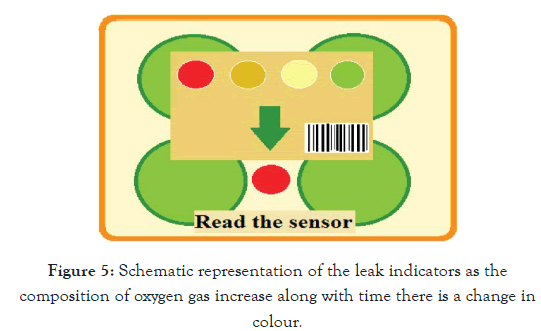
Figure 5: Schematic representation of the leak indicators as the composition of oxygen gas increase along with time there is a change in colour.
Temperature indicators
Thermochromic inks are inks that change physically and shows different colour at the different colour at different temperature. These links are generally used for beverage packaging cans or microwavable food items which can withstand a higher temperature, enabling customers to determine if the product is hot or cold before serving [3]. These inks are of two types, one is reversible thermochromic ink, and another is irreversible thermochromic inks. The principle on which these ink works is the change in internal structure due to temperature rise or breaking and formation of chemical bonds due to temperature. Irreversible inks change colour permanently as the temperature rise and do not return back as the temperature falls back. But in the case of reversible thermochromic inks, the colour changes temporarily. Ink changes colour as temperature rises and returns back to its original colour as the temperature comes to its initial value. These types of inks or coloured materials are very useful for controlling counterfeiting by making it more secure 9 (Figure 6). The use of thermochromic inks and pigments in the food packaging sector is limited to cold and hot beverage package cans or package like cold drinks: beer and wine bottles, soup package, coffee packaging.
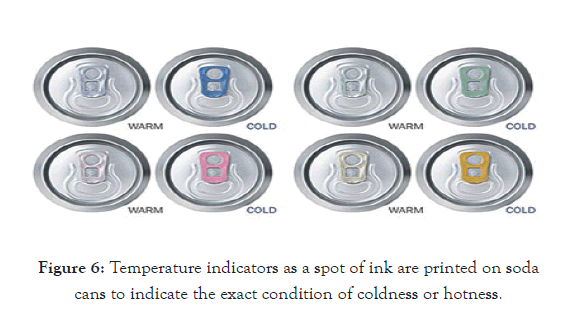
Figure 6: Temperature indicators as a spot of ink are printed on soda cans to indicate the exact condition of coldness or hotness.
Sensors
A sensor is a device that detects, locates, or quantifies a problem before sending indications to test physical properties and chemical properties. A sensor has the capability to commonly detect an incident in the neighbouring packaging environment. Mainly a Sensor has two components a receptor and a transducer. The receptor senses the physical variables like temperature, pressure, gases and sends them to the transducer. The second part of the sensors is a transducer that converts energy from one form to another form which can be coded and encoded by corresponding devices equipment electronically [6]. It may be critical to producing intelligent food packaging that makes use of portable chemical sensors to identify various chemical compounds and chemicals gas molecules, especially hydrogen gas, oxygen gas, nitrogen dioxide, and carbon-di-oxide gas in the altered atmosphere of packaging, to be sure about food quality and safety [7].
Gas sensors
Gas Sensors, as the name suggests, have an application to identify the gas analyte (the substance responsible for giving reaction for indication) release inside the package. Gas sensors include Oxygen (O2) sensors, Carbon Dioxide Gas (CO2) sensors, water vapour sensors, ethanol (alcohol-based) sensors, metal oxide semiconductor-based sensors, organic chemical conducting polymers, and piezoelectric (pressure-sensitive sensors), crystal sensors, etc. Carbon dioxide gas can be used as a direct food quality indicator. Carbon dioxide is preventing microbial growth because microbes need oxygen and release carbon-di-oxide gas and spoilage the food product and decrease the shelf-life of the food product.
Biosensors
Biosensors are used to trace, detect any change in food packages due to biological reactions. Biosensors generally are made up of mainly two components, firstly bioreceptors and secondly a transducer [9]. Bioreceptor identifies the bio-enzymatic analyte and transducer converts it into countable electronic output [10].
Data carriers
Data carrier kind of electronic devices incorporated in packaging which provides various advantages like better traceability and trackability for inventory management in the supply chain. Data carriers are called automatic recognition equipment. Data carriers also enhance the information flow efficiency in the food supply chain management, which provides help to get better communication of food quality and safety. The data carrier is intended to find to track and trace not talks about the quality of food, but rather to automate, trace, avoid fraud, or defend against counterfeiting. The data carriers are mainly used on the tertiary package. There are four kinds of data carriers such as bar code, quick response codes, Radio Frequency Identification Devices (RFIDs) and Near Field Communications (NFCs) [11].
Bar codes
Bar codes are a technique to represent information in a machinereadable format. Bar code store data in the form of spaces and parallel lines (figure 7). These are a one-dimensional array of parallel spaces and bars. Bar code is used on primary packaging as well as secondary packaging or sometimes passed on tertiary packaging. These bar codes can be scanned or read by optical scanners and smartphones [12].
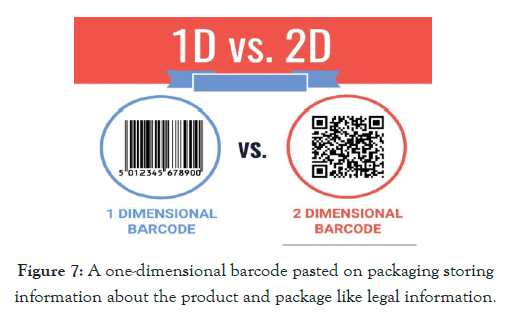
Figure 7: A one-dimensional barcode pasted on packaging storing information about the product and package like legal information.
Quick Response (QR) code
Quick response codes are a two-dimensional array of randomly arranged dots and rectangles. QR codes like bar codes can be used on primary, secondary and tertiary packaging holding needful information. The invention of bar codes was done by DENSO WAVE Japan-based Company, in 1994. QR codes can be used by locater and identifiers, tracker that redirects to the website (figure 8).
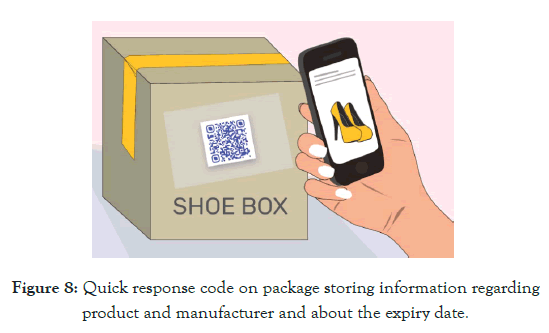
Figure 8: Quick response code on package storing information regarding product and manufacturer and about the expiry date.
Radio frequency identification RFID Tags
RFID is one of the advanced data carrier’s methodologies in modern days. It can carry information of data up to 1 megabyte [7]. Having non-contact to gather real-time data associated with the package in a device called RFID. It is expensive in comparison with QR codes or bar codes and needs more advanced technology to decode the information with them. it also helps in tracking the product in the supply chain network and calculates the inventory (figure 9).
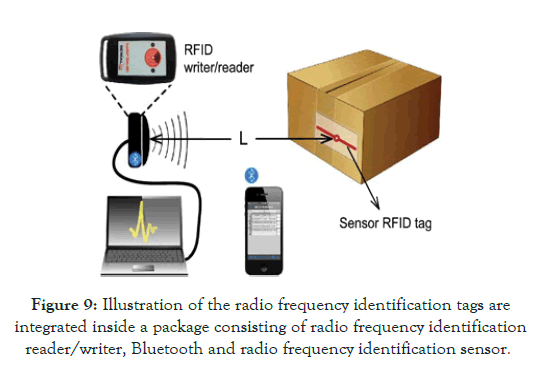
Figure 9 : Illustration of the radio frequency identification tags are integrated inside a package consisting of radio frequency identification reader/writer, Bluetooth and radio frequency identification sensor.
Near Field Communication (NFC) tags
Information Communication and Technology solutions have an effect on the value and safety of any product, and they are needed to maximize the flow of information between farmers and stakeholders, as well as to enhance traceability in the food supply chain. Tracking of food and package throughout the supply chain is very good and important for consumers and inventory managers to be safe from a scam. With the help of new technology being used now a day’s consumers feeling safe and having surety for food quality. Bad publicity and counterfeiting can be minimized by using the new technology of tacking devices like NFC tags, RFID tags [13]. People nowadays using the web and smartphone to select the product on the basis of review or rating of other customer’s feedback. And using a device and tracking, scanning a product, people can be sure that they are buying a genuine product (figure 10).
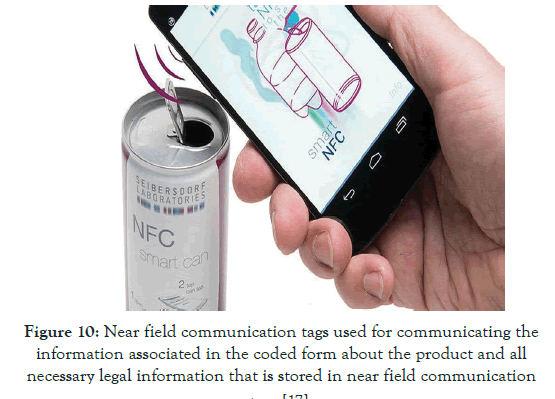
Figure 10: Near field communication tags used for communicating the information associated in the coded form about the product and all necessary legal information that is stored in near field communication tags [17].
Challenges in applications of intelligent Packaging systems
• The real-time quality status of a food product can be evaluated by the application of intelligent packaging systems
• With the help of quality, monitoring may reduce the time and material cost of the package
• Intelligent packaging systems like data Carriers enable better supply chain management traceability
• Data carriers like bar codes and quick response codes are cheaper and easy to use
• Development and production costs for sensors and timetemperature indicators high
• The cost for packing materials should be lesser as possible.
• We should not rely 100% on intelligent packaging equipment for the finest product quality because sometimes, misuse and failure of the systems may also take place
• Monitoring only one constraint cannot give a complete statement about the quality status of a product inside the package
• External environmental effects such as sunlight, temperature or mechanical hazards, stress may also have an adverse impact on the technologies [14]
Concluding Remark
Intelligent packaging has the ability to bring a revolution in the packaging industry. Unlike passive packaging, IP has better functionality in terms of communication. It can assure the consumers about the product’s safety inside the packaging throughout its life. With enough reasons to implement IP at the industrial level, it still is facing issues like cost-effectiveness, performance stability, compatibility with the packaging material, processing equipment at the industrial level. Out of all these issues, the performance of IP has to be improved further to make it even more reliable. Studies have already been focusing on this element and have a better scope for research in the future.
Acknowledgement
Author Jitendra Kumar would like to thank the Ministry of Human Resources and Development (MHRD), Government of India, for providing financial support to carry out this research work during his M.Tech study.
Conflict of Interest
The authors declare no conflicts of interest.
REFERENCES
- Kuswandi B. Active and intelligent packaging, safety, and quality controls. Fresh-cut fruits and vegetables. 2020:243-294.
- Kuswandi B, Murdyaningsih EA. Simple on package indicator label for monitoring of grape ripening process using colorimetric pH sensor. J Food Meas Charact. 2017;11(4):2180-2194.
- Puligundla P, Jung J, Ko S. Carbon dioxide sensors for intelligent food packaging applications. Food Control. 2012;25(1):328-333.
- Raymana A, Demirdövenb A, Baysala T. Use of indicators in intelligent food packaging. InIEEE conference on intelligent transaction system 2016; 1256-2010.
- Beshai H, Sarabha GK, Rathi P, Alam AU, Deen MJ. Freshness monitoring of packaged vegetables. Applied Sciences. 2020;10(21):7937.
- Kit L, Yam P, Takhistov T, Miltz J, Conceptual framework of intelligent packaging J Food Sci 2005;70(1):1-10.
- Mustafa F, Andreescu S. Chemical and biological sensors for food-quality monitoring and smart packaging. Foods. 2018;7(10):168.
- Yuan M, Chahal P, Alocilja EC, Chakrabartty S. Wireless biosensing using silver-enhancement based self-assembled antennas in passive Radio Frequency Identification (RFID) tags. IEEE Sens J. 2015;15(8):4442-4450.
- Müller P, Schmid M. Intelligent packaging in the food sector: A brief overview. Foods. 2019;8(1):16.
- Firouz MS, Mohi Alden K, Omid M. A critical review on intelligent and active packaging in the food industry: Research and development. Int Food Res J. 2021:110113.
- Fuertes G, Soto I, Carrasco R, Vargas M, Sabattin J, Lagos C. Intelligent packaging systems: sensors and nanosensors to monitor food quality and safety. Journal of Sensors. 2016;2016.
- Sense R, Nanotechnology Products. J Sens 2016.
- Jacobsen J, Thermochromic photochromic inks aid in shelf differentiation Beverage Industry. Beverages Ind 2014:1-3
- Katona M, Bodnár P, Nyúl LG. Distance transform and template matching based methods for localization of barcodes and QR codes. Com Sci Inf Sys. 2020;17(1):161-179.
- Ramos M, Valdés A, Mellinas AC, Garrigós MC. New trends in beverage packaging systems: A review. Beverages. 2015;1(4):248-272.
- Okazaki S, Navarro A, López Nicolas C. Assessing gender differences in ‘quick response’code loyalty promotion acceptance. Rinsho Eiyo 2013;33(12):1165-1177.
- Smart NFC food packages might be coming to a store near you. CNET 2021.
- Ramakanth D, Singh S, Maji PK, Lee YS, Gaikwad KK. Advanced packaging for distribution and storage of COVID-19 vaccines: a review. Environ Chem Lett. 2021;3:1-2.
- Gaikwad KK, Singh S, Lee YS. Functional corrugated board with organic and inorganic materials in food packaging applications: A Review. J Food Packag Sci Tech. 2016;22(3):49-58.
- Singh S, Maji PK, Lee YS, Gaikwad KK. Applications of gaseous chlorine dioxide for antimicrobial food packaging: a review. Environ Chem Lett. 2020;3:1-8.
- Singh G, Singh S, Kumar B, Gaikwad KK. Active barrier chitosan films containing gallic acid based oxygen scavenger. J Food Meas Charac. 2021;15(1):585-593.
- Singh S, Gaikwad KK, Lee YS. Temperature-controlling system for fresh produce during distribution and transportation. J Therm Anal Calorim 2020;139(3):1915-1923.
- Gaikwad KK, Singh S, Negi YS, Lee YS. The effect of trans-polyisoprene/LDPE based active films on oxidative stability in roasted peanuts. J Food Meas Charac. 2020;14(4):1857-1864.
- Kadam AA, Singh S, Gaikwad KK. Chitosan based antioxidant films incorporated with pine needles (Cedrus deodara) extract for active food packaging applications. Food Control. 2021;124:107877.
- Gaikwad KK, Singh S, Shin J, Lee YS. Novel polyisoprene based UV-activated oxygen scavenging films and their applications in packaging of beef jerky. LWT. 2020;117:108643.
- Singh S, Gaikwad K, More PK, Kumbhar BK. Microwave convection drying characteristics of beet root (Beta vulgaris L.) using modeling equations for drying. J Food Process Technol. 2013;4(263):2.
- Gaikwad KK, Singh S, Lee YS. A new pyrogallol coated oxygen scavenging film and their effect on oxidative stability of soybean oil under different storage conditions. Food Sci Biotechnol. 2017;26(6):1535-1543.
- Singh S, Gaikwad KK, Lee YS. Development and application of a pyrogallic acid-based oxygen scavenging packaging system for shelf life extension of peeled garlic. Sci Hortic. 2019;256:108548.
- Singh S, Gaikwad KK, Omre PK, Lee YS. Process development for stabilization of sugarcane juice using response surface methodology. J Food Meas Charac. 2016;10(4):727-737.
- Singh S, Omre PK, Gaikwad K. Standardization of process parameters for neem oil and determination of properties for using as a fuel. Int J Eng Res Gen Sci. 2014;2:1-7.
- Singh S, Omre PK, Gaikwad K. Sensory evaluation of optimized and stabilized sugarcane juice. Int J Eng Res Gen Sci. 2014;2(6):637-648.
Citation: Kumar J, Akhila K, Gaikwad KK (2021) Recent Developments in Intelligent Packaging Systems for Food Processing Industry: A Review 12:895
Copyright: © 2021 Gaikwad KK, et al. This is an open-access article distributed under the terms of the Creative Commons Attribution License, which permits unrestricted use, distribution, and reproduction in any medium, provided the original author and source are credited.


